Located at the foot of Monte Rosa in Italy’s Piedmont region, Valsesia is a valley steeped in history, culture, and artisanal traditions. A visit to this area reveals a world shaped by the skilled craftsmanship of local artisans. Here, wood, textiles, and intricate lacework convey the stories of generations past.
Table of Contents
The Walser Legacy: Mountain Craftsmanship Through the Ages
In the 13th century, the Walser people, of Germanic origin, settled in the high valleys of Valsesia. Their influence can be seen in architecture, language, and particularly in crafts, which has persisted over the centuries.
PLAN YOUR TRIP TO ITALY
Stay connected on the go with a Holafly eSIM, offering unlimited data at reliable 3G, 4G, and LTE speeds across Italy.
For added peace of mind during your travels, take out Heymondo travel insurance, perfect for a stress-free and well-protected adventure.
If you plan to explore beyond the main cities, renting a car is the best way to discover Italy’s hidden gems at your own pace.
The wooden homes they built, constructed without nails and adorned with intricately carved balconies and stone roofs, demonstrate their ingenuity. Everyday items like wardrobes, chests, and kitchen utensils were meticulously handcrafted, showcasing both functionality and aesthetic appeal.
Textile production was also important. Walser women wove wool and linen into durable garments, often decorated with intricate embroidery, which remains a hallmark of traditional attire today.
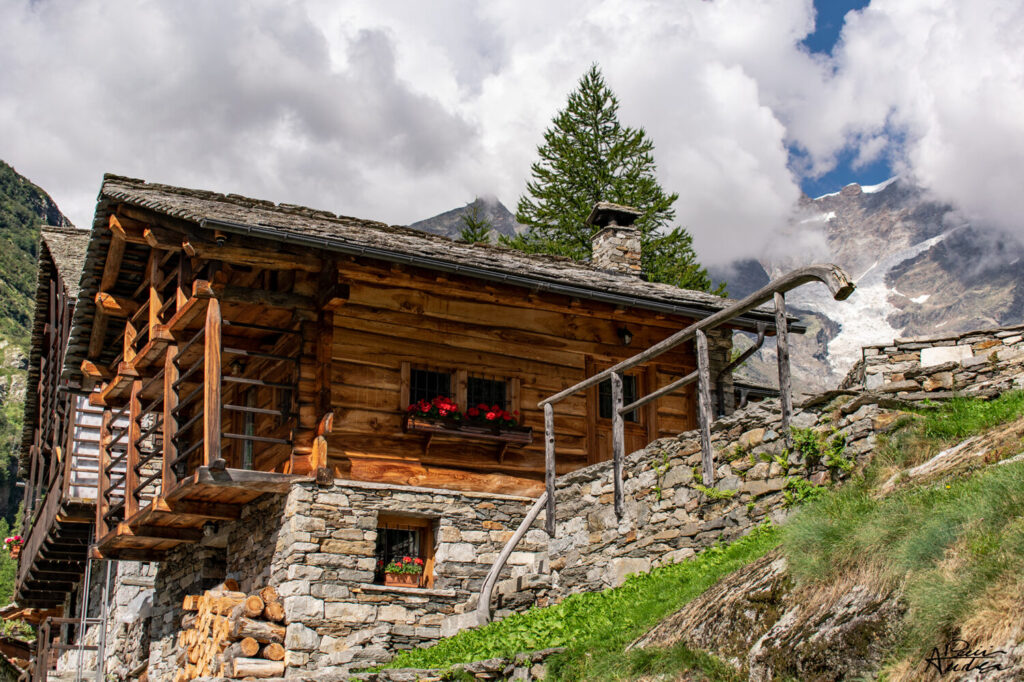
Puncetto Valsesiano: The Art of Needle Lace
One of the most cherished crafts in Valsesia is puncetto, a delicate needle lace made entirely by hand, without a loom. The term puncetto originates from the local dialect word punc, which means “stitch”.
This lace is created by making thousands of tiny knots with a needle and thread, resulting in intricate geometric patterns.
Historically, puncetto adorned household linens and traditional clothing, symbolizing elegance and domestic pride. Today, artisans continue this tradition, producing both classic white lace and rare coloured versions.
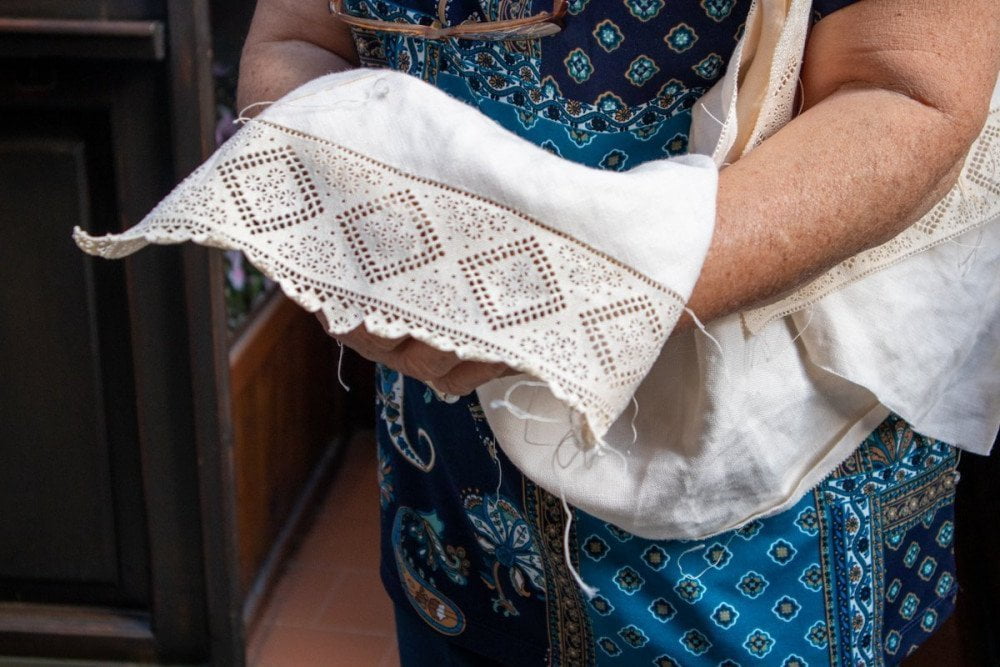
Weaving and Traditional Costumes: Threads of Identity
Textile weaving remains a vibrant part of Valsesian culture, particularly in towns like Varallo. Artisans use handlooms to create wool, linen, and hemp fabrics, often dyed with natural colours and featuring patterns inspired by alpine nature.
These textiles are part of traditional costumes, which are still worn during festivals and ceremonies. Women’s costumes are especially elaborate, featuring wide skirts, embroidered aprons, hand-stitched bodices, and heirloom jewellery.
Each piece reflects the community’s heritage and values. For example, the ligam, the band tied on the breast, used to tell whether a girl was single or married, depending on the position of the knot.
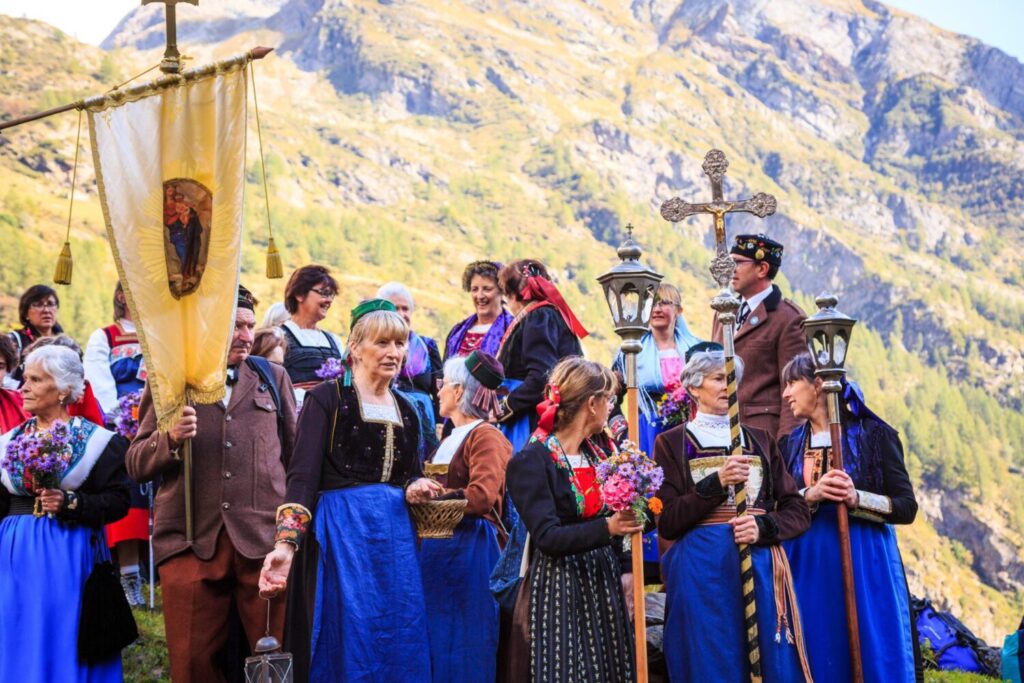
Scapin Valsesiani: Footwear Rooted in Tradition
The scapin is a traditional slipper originating from the Valsesia region. These charming slippers are deeply rooted in the local culture and history, reflecting the unique lifestyle of the mountain community.
Crafted by Walser people from recycled fabrics and featuring sturdy hemp soles, scapin were designed for durability and comfort. They were well-suited for the rugged terrain of the mountains, allowing wearers to easily navigate the challenging landscape. While everyday versions were functional and simple, there were more ornate versions for special occasions.
Today, artisans continue to produce scapin using traditional methods, ensuring that this heritage craft endures. They offer a variety of designs that blend classic elements with modern aesthetics. You can buy them in many shops in Valsesia.
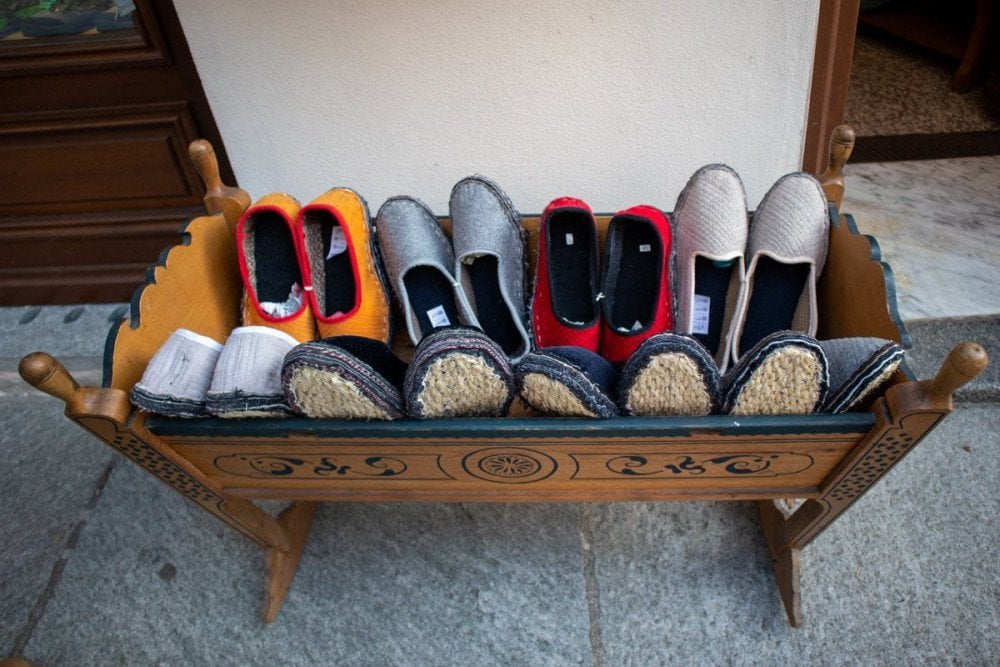
Wood Carving: Sculpting the Spirit of the Mountains
Woodworking plays a vital role in the rich tradition of Valsesian craftsmanship. Artisans in this region skillfully carve a variety of local woods, such as larch, walnut, ash, and Swiss pine.
Their craftsmanship results in an impressive range of items, from intricate religious statues to practical household utensils, traditional masks, and beautifully decorated chests.
Among these creations, the famed Valsesian chests stand out. Often passed down through generations, these chests are not just functional items. They are also works of art.
Many chests are adorned with elaborate floral motifs, family crests, and religious symbols, making each piece unique and culturally significant.
Towns like Riva Valdobbia and Alagna Valsesia are renowned for their woodcarving workshops. In these towns, you can still observe artisans at work and purchase unique handcrafted pieces.
Preserving Heritage: Museums and Cultural Initiatives
Dedicated institutions, such as the Walser Museum in Alagna Valsesia and the Ecomuseum of Valsesia, try to preserve Valsesia’s rich artisanal heritage. These cultural centres showcase the intricate tapestry of Valsesia, highlighting traditional crafts and distinctive architecture that have shaped the area over the centuries.
The Walser Museum, in particular, offers visitors a fascinating glimpse into the life of the Walser people. Through carefully curated exhibits, the museum brings to life their alpine pastoral culture. You can learn more about techniques and materials used in traditional crafts, appreciating the skills passed down through generations.
Local associations, such as the Società Operaia di Mutuo Soccorso, also work to preserve Valsesian traditions. During my visit to the Bottega dell’Artigianato in Varallo Sesia, the volunteer, Mrs Angela, explained the tradition of puncetto lace and gave a demonstration.
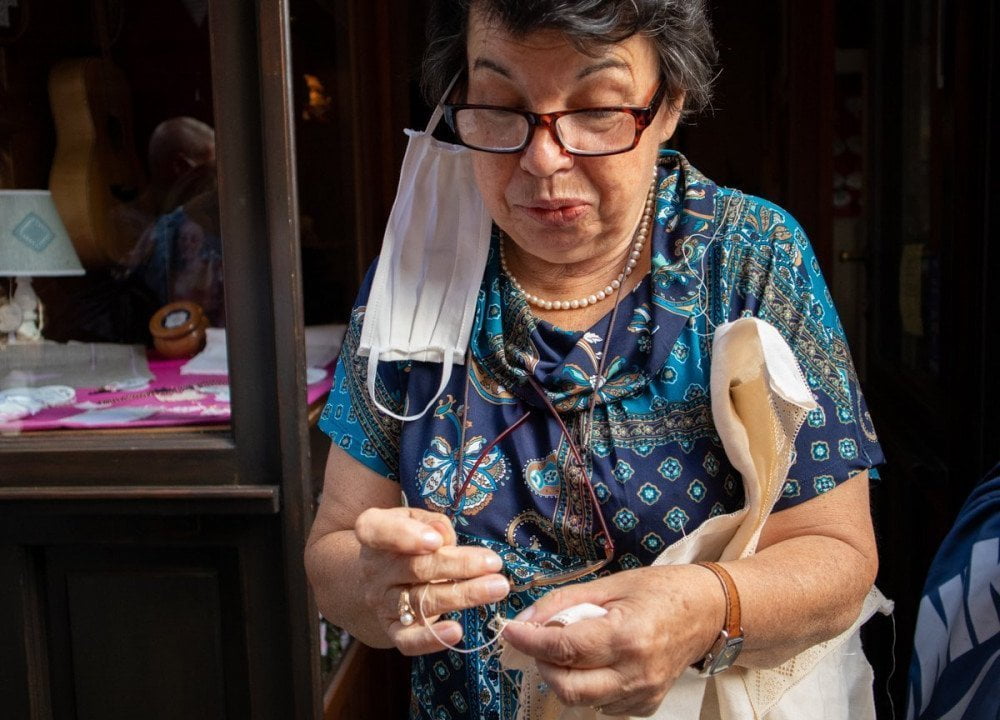
Conclusion: A Living Tapestry of Tradition
Valsesia’s artisanal crafts are not just objects; they represent the community’s identity, resilience, and connection to the land. From the intricate puncetto lace to the sturdy scapin slippers, each item tells a story of traditions.
If you are looking for an authentic cultural experience, exploring the workshops and museums in Valsesia offers a unique opportunity to witness the enduring artistry of this alpine valley. Feel free to leave a comment about Valsesia’s crafts.
